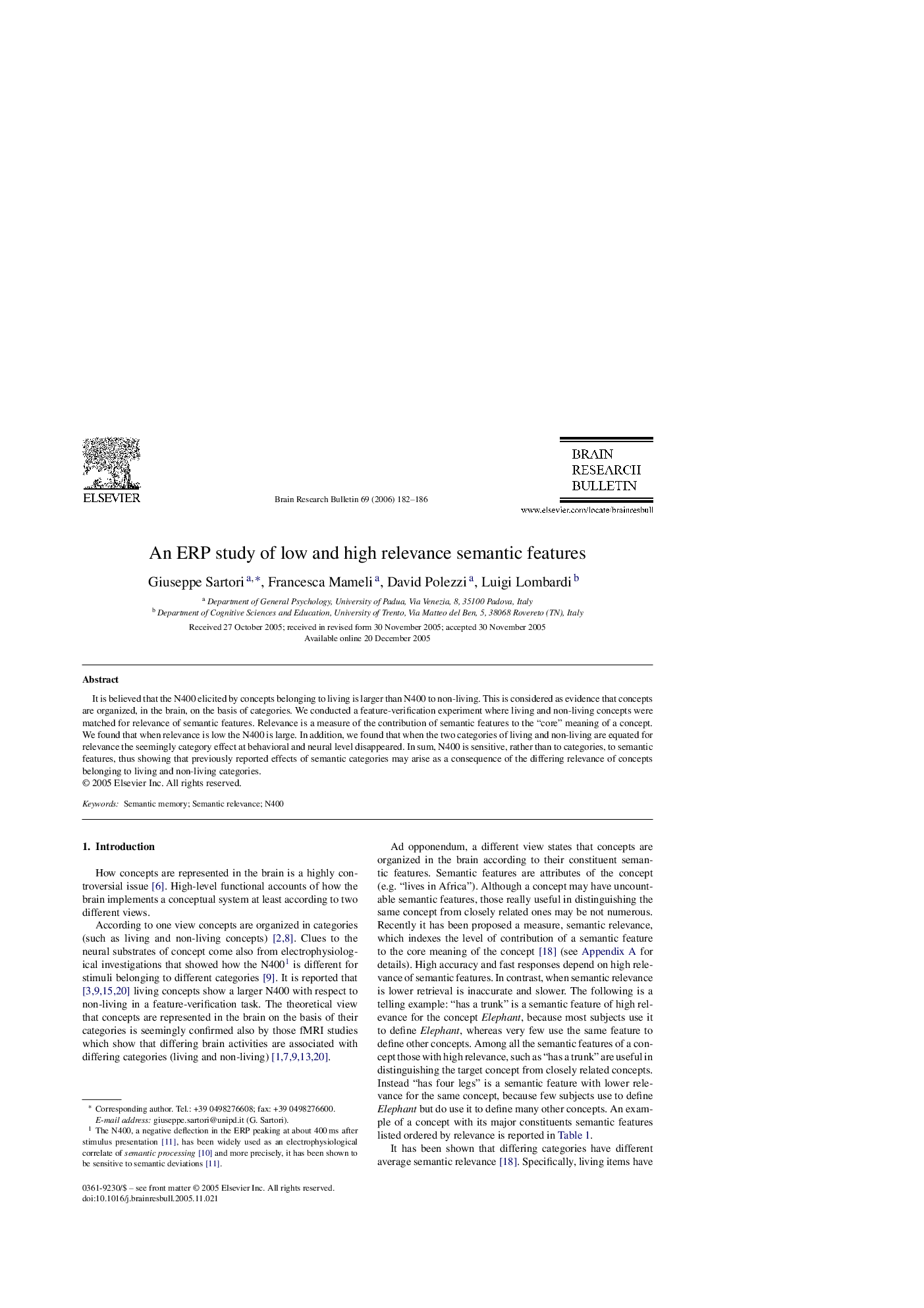| Article ID | Journal | Published Year | Pages | File Type |
|---|---|---|---|---|
| 4320360 | Brain Research Bulletin | 2006 | 5 Pages |
It is believed that the N400 elicited by concepts belonging to living is larger than N400 to non-living. This is considered as evidence that concepts are organized, in the brain, on the basis of categories. We conducted a feature-verification experiment where living and non-living concepts were matched for relevance of semantic features. Relevance is a measure of the contribution of semantic features to the “core” meaning of a concept. We found that when relevance is low the N400 is large. In addition, we found that when the two categories of living and non-living are equated for relevance the seemingly category effect at behavioral and neural level disappeared. In sum, N400 is sensitive, rather than to categories, to semantic features, thus showing that previously reported effects of semantic categories may arise as a consequence of the differing relevance of concepts belonging to living and non-living categories.
